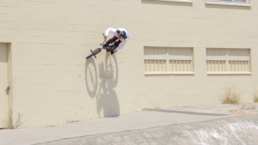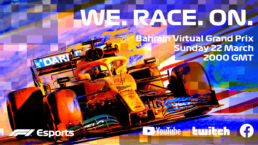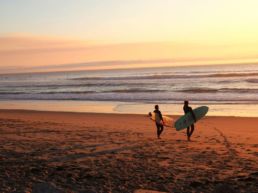Hybrid digital and physical events have been on the rise in both mainstream and breakthrough sports during COVID-19. Creative and strategic thinking have aligned and impressive solutions found.
We’ve heard a lot about innovation this year, of course. Companies pushing boundaries and breaking timescales. Anything to fight the repercussions of the pandemic.
Let’s ask ourselves though: which rights holders have been truly innovative?
I took a look.
First and foremost, what does innovation really mean?
The use of new methods or ideas.
That’s why I think the 3 approaches below are remarkable (especially in such uncertain times).
WWE’s winning digital strategy

Like most rights holders, World Wrestling Entertainment (WWE) faced unknown territory when COVID hit. Empty arenas. Disheartened fans. A rapidly shrinking revenue stream.
What did they do? They took a risk. Luckily for them, it paid off as they navigated a global pandemic with record results in Q3 2020.
With live ticketing revenue at an all-time low, WWE looked to new initiatives and innovations to tackle the crisis. They found a great way to continue delivering their scheduled live content.
Their work offers valuable learnings for other rights holders and distribution networks.
How did they do it?
They made an incremental investment of $22–27 million to launch WWE ThunderDome, a free state-of-the art live video which transported fans into the arena. This ultimate viewing experience brought fans close to the action, while mitigating the absence of fans in the arena.
By taking advantage of a spectacle without crowds, WWE broadcast their showcase event Wrestlemania 36. It gained 967 million video views across digital and all social platforms – a 20% rise year on year.
This approach also enabled WWE Network to maintain their scheduled events, flipping negativity on its head and owning the empty arena narrative.
How successful was it?
WWE maintained subscribers and grew their addressable audience by 6%, increased video views by 3% in Q3, and gained 50+ billion YouTube views.
Key stats
- $35.3 million – increase in revenue in Q3 2020 compared to Q3 2019
- $22–27 million invested in WWE ThunderDome
- 6% increase in addressable audience
- 9.7 billion video views in Q3 2020, a 3% increase on Q3 2019
- 50+ billion YouTube views
What learnings can rights holders and distribution networks take away?
- Tackle a crisis head on.
- Evolve, adapt, review.
- Focus on enhancing fan engagement and investing in content production. (WWE increased spend on digital and took the risk to diversify revenue streams.)
- Prioritise digital engagement and target young digital natives.
The result? You’ll open up a world of opportunities.
Hurricane Group’s hybrid contest – E-FISE Montpellier

Without live action, events companies such as Hurricane Group could have been in real trouble.
E-FISE Montpellier by HONOR (E-FISE) was an innovative solution that arose out of the cancellation of FISE Montpellier – an event that usually attracts 650,000+ spectators.
Riders entered their videos for a chance to win part of a €150,000 prize pot. The contest brought live event entertainment to a virtual stage for fans and sponsors alike, reaching millions across the globe by using a platform-specific strategy and media buying. There were entries from 85 countries; new and existing sponsors supported the initiative and helped build exposure and a legacy for partners and host cities.
Content was distributed by hundreds of riders from different nations and picked up by millions of action sports fans around the world.
E-FISE enabled FISE to continue supporting their loyal athletes and fans during tough times. Webstivals (online festivals) provided performances, rider interviews and music live from host city venues and streamed live on Twitch.
Digital output was shared with FISE’s 1.4m social media followers, action sports stars, musicians and entertainers. The live Winners’ Ceremony, hosted on Twitch, had over 200k views.
The combination of virtual competition, voting and a live awards ceremony set E-FISE apart from the rest. Behind-the-scenes content and huge action sports names supported the initiative.
Hosts who commented during the live show included Skateboarding’s Tomas Vintr and Flatland commentator Claude Hickman; guests includes Nils Jansons (Roller), the Jumelin family (BMX), Mery Muñoz (Roller) and Ke’Chaud Johnson (Skateboard).
Key stats
- 20 million video views
- 2 million people reached
- 11 sponsors
- 500,000 fan votes
- 200,000 views of the live winners’ ceremony
F1’s virtual Grand Prix

Formula One (F1) hit the news when it replaced every Grand Prix with a virtual one.
Famous drivers and celebrities from the sporting and F1 gaming community streamed the events from their homes. Manchester City’s Sergio Agüero and Belgium goalkeeper Thibaut Courtois contributed to a 1,000% month-on-month growth of streaming hours. F1 also boasted 695 million impressions across all social media platforms and over 85 million video views on their series content.
As if a record-breaking campaign wasn’t enough, to supplement the Virtual Grand Prix, F1 created #Challenge events featuring the likes of Lando Norris, George Russell, Nico Rosberg and David Coulthard which achieved 1.9 million views across digital platforms. Pro F1 Esports drivers were featured in Pro Exhibition races, achieving over 2.5 million digital views.
Key stats
- 11 current F1 drivers involved
- 30 million video views
- 69 different drivers (including F1)
- 695 million social media impressions
- 2.7 million driver Twitch views
- 4 race winners
- 2 champions
What made it work?
The power of influencers has been proven over the years and this is a prime example.
Getting celebs and athletes onboard automatically amplifies the reach and grip of your campaign – you gain their followings’ eyes on your content, a tactic that should never be underestimated.
Positioning these influencers in a different or unusual scenario adds interest and mystery: who doesn’t want to see one of their favourite footballers in the comfort of their own home playing a video game?
It adds a layer of normality and commonality between your audience and influencers.
And there we have it. Three stellar examples of rights holders with their heads in the right place and strategies on the right path.
I’m already looking forward to seeing what rights holders pull out of the bag in 2021!




